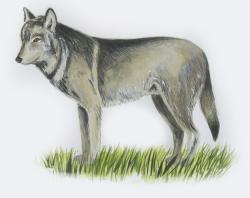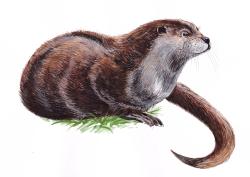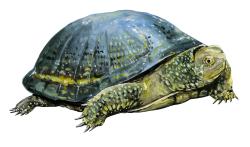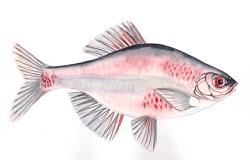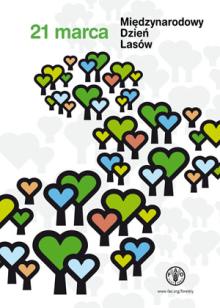 Asset Publisher
Asset Publisher
Report on cross-border corridors
The initial objectives have been achieved, however during project works, there occurred the need to adapt both the realisation of the project, and type and contend of declared actions, which were presented below.
Working out common evaluation methodology due to population occurrence of chosen species (arrangements on the range of existing data sources assessment , type of mapping in the field and the partners taking part in the project). Within the workshops prepared in Franfurt on the Odra River, on the basis of the conception made by the IUS company within the order, there was decided further course of action.
There were particularly established the following:
· The monitoring of wolf will be based on existing data sources and experts surveying. On German side, there will be photo-traps applied additionally in specified points.
· Defining European otter population will be executed by visits to the areas inhabited by otters, among others, water reservoirs and assessment of existing data, as well as additionally on German side with help of photo-traps applied near the culverts.
· Defining activities of kingfisher population, will take place on German side by appropriate local department calledNABU(Nature AndBiodiversity Conservation Union). On German side, the bird ringing won't be carried out. The activities will be strictly coordinated between NABU and the working group of professor Jerzak (the Nature conservation League / University of Zielona Góra).
· European pond turtle: on Polish side , defining of the population will be conducted within the well-known areas of their occurrence. On the German side, there will be taken stock of water reservoirs, which often constitute potential habitats of European pond turtle.
· Collecting and analysis of data coming from institutions working on nature and forest protection, associations of nature conservation, universities and publications on chosen species ; on German side, there has already been consultation with the Ministry of the Environment, Health and Consumer Protection. Brandenburg department NABU will make all collected so far information about kingfisher occurrence available within the framework of the order. The Forest District Cybinka will support the working group of professor Jerzak – regardless of the subsidy received concurrently project by the Forest District, connected with ecological education and tourism.
On the sever of University of Zielona Góra, there was fixed the platform of data exchange GIS (Geographic Information System). The exchange is carried out with the programme files ArcGIS (mdb format).
The selection of areas was done, on both Polish and German sides, where monitoring is to be done.
The first meeting / workshops starting the project (preparations, arrangements, contend – related work) were prepared on February 28, 2013 in Frankfurt on the River Odra and they were very popular among Poles and Germans.
Promotional actions accompanying the project, were realised in shape of Polish – German leaflet, publications on the websites www.wildkorridor.de and www.stiftung-nlb.de, news bulletin („newsletter"), taking part in conferences and press releases. Relevant confirmation of promotional actions was submitted in the Euroregion, altogether with the report.
The results of inventory were entered into GIS and thus, there were elaborated maps of population occurrence on Polish and German sides.
The cards with descriptions of particular animal species and ideas concerning appropriate steps were worked out, and then collected in the action cards and action plans.
European Pond Turtle
Emys orbicularis, length of shell: about 20 cm, weight: about 1 kg, length of life: 90-120 years
European Pond Turtle is the only living ferae naturae water turtle in Poland. It likes basking in the sun, however when it is too hot, the turtle stays in the water.
Its development is very slow – at the age of 8, it weighs hardly about 80 g. When the offspring is born, its length equals 3-3,5 cm, while its weight is about 5 g. Male turtles breed at the age of 12 and females at the age of 20 for the first time.
Such late sexual maturity and low fertility, or destruction of natural habitat of pond turtles by men at the same time, can have disastrous consequences for this species.
European Pond Turtle is very rare species having been under strict protection since 1935.

Common Kingfisher
Alcedo atthis, lenght of body: 16,5 cm, weight: 35 g, lenght of beak : 4 cm, lenght of hatching on eggs: 20 days
The flight call of kingfisher is a short sharp whistle, chee, repeated continuously. Its call reminds also sharp whistle or repeatable shrit-it-it.
During building its nest, it's essential for each couple to reserve a suitable and a few hundred long stretch of river. Then they protect it against other kingfishers. In case another kingfisher enters its territory, both males display from perches, and fights for the territory may occur . The fighting birds threaten each other, race, fall down into the water and try to drown one another. The one, that loses its strengths first leaves disputable territory.
Common Kingfisher is quite voracious.
Staying in the nest, 7 developing nestlings devour about 1000 little fish of the most common species. When baby birds start flying for the first time, their weight from 3 g increases up to 30 g. In the seventeenth day of their life the appetite of nestlings riches the top, and so they can eat about 80 fish per day.
Common Kingfisher is under strict species protection.
The main reason of this small bird disappearance is the loss of its natural habitat, water pollution and disturbance made by fishermen and tourists.
Wolf
Canis lupus, length: 1-1,6 m (+ 40-50 centimetres long tail) withers height: 80-100 cm, weight: 27-54 kg. Male wolfs are about 20-25% bigger than female wolfs.
This is the species with great territory and space needs. Usually, the territory occupied by the pack equals about 100-300 km2, however the size depends on the area and availability of food. The packs of wolfs counts up to 20 members each, however they tend to be less numerous as a family groups which consist of dominant (parental) couple with their offspring and alternatively, the rest of the wolfs from the previous litter. A strict internal hierarchy reigns in the pack.
Wolfs posses well developed way of communicating by means of different sounds, body language and chemical substances, such as pheromones and by marking with their dung.
This big predator in difficult conditions can even fast for two weeks. Yet, it can be a real glutton, namely 15 wolfs have eaten 270 kg elk within three hours.
In the summer, the wolf eats 2-4,5 kg of food on average.
Amur bitterling
Rhodeus sericeus, length: 5-8 cm (maximum 11 cm)
Amur Bitterling lives in quiet regions of lower parts of rivers, old river beds, river broads, bays with muddy river bottom and overgrown lakes. Bitterlings live in a school of fish consisting of a dozen or so members, and they often tend to join to schools of other fish species living in the water basin.
The fish characterises with grey and green chine, grey and silver sides, and white belly often with a shade of pink. Its scales has got dark grey edge, what makes a kind of netting pattern. In the back part of its body, there is blue and green stripe in the shape of narrow triangle with its basis located in the middle part of tail caudation. Dorsal and anal fins are grey, but a caudal fin , as well as pectoral and pelvic fins are red or flashy orange.
Amur Bitterling changes its colour during its spawning time.
The fish feeds on phytoplankton.
In Poland, this species is under strict protection.
Zajęcia edukacyjne w ramach projektu
 DSC08965.JPG
DSC08965.JPG
 DSC09125.JPG
DSC09125.JPG
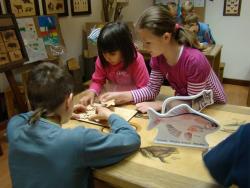 DSC08970.JPG
DSC08970.JPG
 DSC08956.JPG
DSC08956.JPG
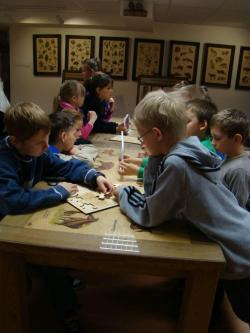 DSC09083.JPG
DSC09083.JPG
 DSC09094.JPG
DSC09094.JPG
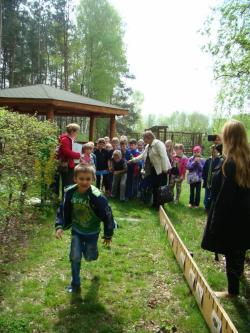 DSC09104.JPG
DSC09104.JPG
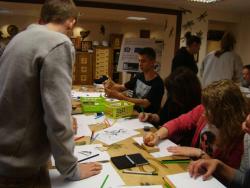 DSC09121.JPG
DSC09121.JPG
 DSC09132.JPG
DSC09132.JPG
Audycja radiowa - Radio Zachód
Dnia 27 kwietnia w Radio Zachód odbyła się audycja radiowa o Projekcie,
Competition for the youth
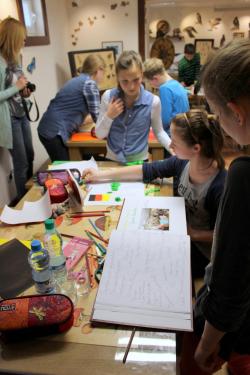 Konkurs dla młodzieży, fot. Mariusz Grondys
Konkurs dla młodzieży, fot. Mariusz Grondys
 Konkurs dla młodzieży, fot. Mariusz Grondys
Konkurs dla młodzieży, fot. Mariusz Grondys
 Konkurs dla młodzieży, fot. Mariusz Grondys
Konkurs dla młodzieży, fot. Mariusz Grondys
 Konkurs dla młodzieży, fot. Mariusz Grondys
Konkurs dla młodzieży, fot. Mariusz Grondys
 Konkurs dla młodzieży, fot. Mariusz Grondys
Konkurs dla młodzieży, fot. Mariusz Grondys
 Konkurs dla młodzieży, fot. Mariusz Grondys
Konkurs dla młodzieży, fot. Mariusz Grondys
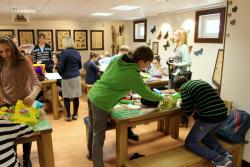 Konkurs dla młodzieży, fot. Mariusz Grondys
Konkurs dla młodzieży, fot. Mariusz Grondys
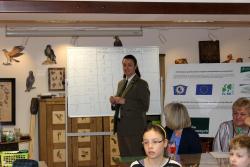 Konkurs dla młodzieży, fot. Mariusz Grondys
Konkurs dla młodzieży, fot. Mariusz Grondys
 Konkurs dla młodzieży, fot. Mariusz Grondys
Konkurs dla młodzieży, fot. Mariusz Grondys
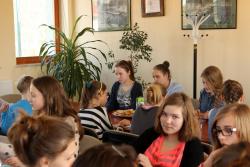 Konkurs dla młodzieży, fot. Mariusz Grondys
Konkurs dla młodzieży, fot. Mariusz Grondys
 Konkurs dla młodzieży, fot. Mariusz Grondys
Konkurs dla młodzieży, fot. Mariusz Grondys
 Konkurs dla młodzieży, fot. Mariusz Grondys
Konkurs dla młodzieży, fot. Mariusz Grondys
 Konkurs dla młodzieży, fot. Mariusz Grondys
Konkurs dla młodzieży, fot. Mariusz Grondys
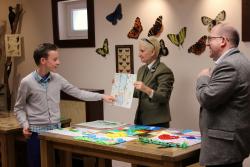 Konkurs dla młodzieży, fot. Mariusz Grondys
Konkurs dla młodzieży, fot. Mariusz Grondys
 Konkurs dla młodzieży, fot. Mariusz Grondys
Konkurs dla młodzieży, fot. Mariusz Grondys
 Konkurs dla młodzieży, fot. Mariusz Grondys
Konkurs dla młodzieży, fot. Mariusz Grondys
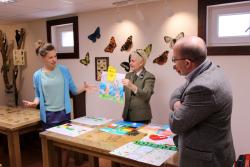 Konkurs dla młodzieży, fot. Mariusz Grondys
Konkurs dla młodzieży, fot. Mariusz Grondys
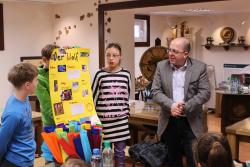 Konkurs dla młodzieży, fot. Mariusz Grondys
Konkurs dla młodzieży, fot. Mariusz Grondys
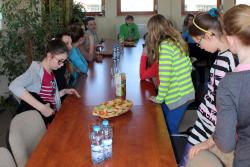 Konkurs dla młodzieży, fot. Mariusz Grondys
Konkurs dla młodzieży, fot. Mariusz Grondys
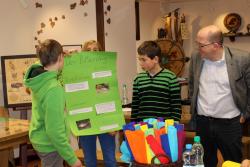 Konkurs dla młodzieży, fot. Mariusz Grondys
Konkurs dla młodzieży, fot. Mariusz Grondys
 Konkurs dla młodzieży, fot. Mariusz Grondys
Konkurs dla młodzieży, fot. Mariusz Grondys
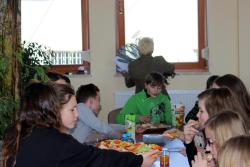 Konkurs dla młodzieży, fot. Mariusz Grondys
Konkurs dla młodzieży, fot. Mariusz Grondys
On March 13, 2014, in the headquarter of the Forest District Inspectorate Cybinka, there was held the competition for German and Polish youth.
For the competition, there came the youth from several Polish and German schools.
The competition struggles went on several disciplines. The students were divided into mixed groups (Polish-German), in which they could demonstrate their knowledge about European otter, wolf, amur bitterling, kingfisher and European pond turtle. They also did the artwork based on designing the poster on the cross-border Corridors.
All the students taking part in the competition got in-kind prizes and diplomas.
Promotion of cross-border cooperation
In 2014, the Forest District Cybinka realised project titled "Promotion of cross-border cooperation of the Forest District Cybinka and Landratsamt Bautzen Kreisforstamt". The partner from Saxony side is Landratsamt Bautzen Kreisforstamt (Division of Forestry at Bautzen District Office) with its seat in Kamenz.
The partner from Saxony side is Landratsamt Bautzen Kreisforstamt (Divisionof Forestry at BautzenDistrict Office)with its seat in Kamenz (www.landkreis-bautzen.de).
Within the project, the website of the Forest District Cybinka was modernised. There were prepared information about the project's partners in three language versions: Polish, German and English.
On the internet under the address www.cybinka.zielonagora.lasy.gov.pl, one can find interesting news on forests, nature and tourist attractions. There are also necessary information, everyone should know while walking around forests, news and special features and trailers of the most interesting events. The website is accompanied by beautiful graphic design, which encourage people to come and visit the Forest District Cybinka.
The project contributed to the cooperation development with the foresters from Saxony, and to the mutual understanding Polish and German foresters. It concerns, not only differences in state regulations, but also in the local ones.
The project "Promotion of cross-border cooperation of the Forest District Cybinka and Landratsamt Bautzen Kreisforstamt" was co-financed from Small Project Fund (Polish abbreviation FPM) by European Union within the Cross-border Cooperation Operational Programme POLAND – SAXONY 2007-2013.

Cross-border Corridors
Educational activities, on the basis of the network of the trans-European migration corridors for wild animals within the area of the Southern Brandenburg – Lubuskie Province.
The Forest District Cybinka started its cooperation with the Nature Protection Fund Brandenburg in 2011.
In the meetings organised by Germans, there were set forth the conditions of the project. In its realization on the Polish side, there will be involved people specialised in various fields (computer scientists, graphic artists, regionalists, etc.). The project will be coordinated by the Forest District Cybinka. Polish side will carry out activities of educational character, and German side of scientific character.
The project is dedicated to the local people from the borderland of Poland and Germany, as well as to nature preservation experts.
Cross-border cooperation in the area of species protection covered by the project will allow an exchange of experiences and will contribute to a better understanding of biotopes on both sides of the border. We would mainly like to focus on educational and promotional activities.
Creation of the network of migration corridors running aside the River Odra, allows the complex monitoring of the species movement covered by the project (namely kingfisher, European otter, wolf, European pond turtle and amur bitterling), as well as other animals for which "the river" isn't any obstacle.
Infrastructure and inconsiderable urban sites development on Polish side enable an access of that area in respect of education and tourism, at the same time not destroying the order existing in nature. The increase of biodiversity among fauna of the Odra River is common aim of Polish and German partner.
Educational and information activities will be directed to all people interested in the project, schools and people related to nature preservation.
The workshops in the Forest District Cybinka will be carried on by groups of people related to the project or by specialists on nature preservation.
Educational classes will be conducted for school groups, pre-school groups and tourists visiting our Forest District.
Main activities within the framework of the project:
- Conducting the educational and information activities.
- Carrying out Polish – German workshops (summary of the project, suggestion for the project continuation).
- Conducting the thematic competition.
- Preparation of educational base.



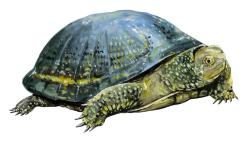


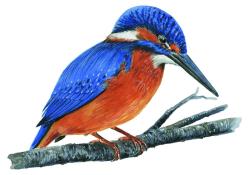

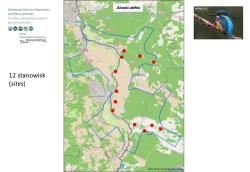






 DSC09681.JPG
DSC09681.JPG
 DSC09674.JPG
DSC09674.JPG
 DSC09728.JPG
DSC09728.JPG

